Dear EFL teachers,
When teachers assess student learning and performance acquired due to online assignments, it concentrates his /her main goal on purely formative purposes, since often there is no final mark on the paper and no summative grade in the grade book. Rather, assessment serves as practice for students, just like a meaningful homework assignment does. This formative assessment – the most valuable one -supports learning through an immediate online peers or teachers’ feedback, or even better a self- reflection posted as text-/media-based blog comment. Keep trying new digital tools for applying effective assessment strategies and developing multi-tasking rubrics.
|
Task 1. Formative versus summative assessment
Analyze the digital resources below and write your reflections on the following: a. define a formative assessment, and reasons of using it in instruction ( maximum 3 phrases); b. state the difference between formative and summative assessment ( maximum 2 phrases); c. identify 3 strategies of formative assessment you consider most effective for your students, justifying your choice ( maximum 3 phrases). |
Task 2: Online tools for EFL assessment
Digital tools represent innovative and effective ways to express feedback on the accomplished students’ assignment in both face-to-face or virtual classes. Select 4 online tools you could use to ensure the formative assessment strategies you presented in Task 1. Please consider that the digital platforms should be described accordingly: Share your choices as a comment on our project blog. |
Task 3: Using rubrics as an online EFL assessment tool
Rubrics, as a simple scoring tool, can be used to assess almost any type of student work, be it essays, final projects, oral presentations, or theatrical performances. Read the information below and outline in a 50-word paragraph what rubrics are and what they are used for; the types of rubrics; the steps to follow while creating rubrics, and criteria to consider when evaluating a rubric. |
Task 4: Let's create an online rubric to assess a student project.
Choose one of the online assignments posted by your students on our blog throughout the EFL Blogging School, choose one you like most (for e.g. , a Narrable or Stupeflix video, a Voicethread or blog E-Portfolio, a poem or an essay posted on your blog), and create a rubric to assess the accuracy and completeness of the accomplished task. Save your rubric and post the link below, as a comment to this blog. Watch the following tutorials and other useful online resources to complete this task: |


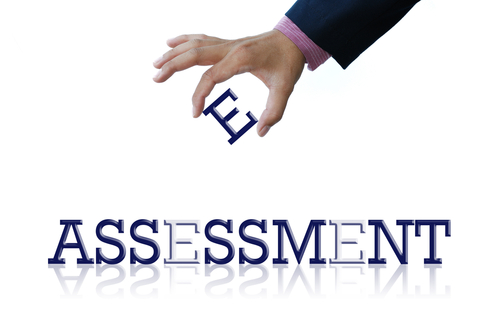
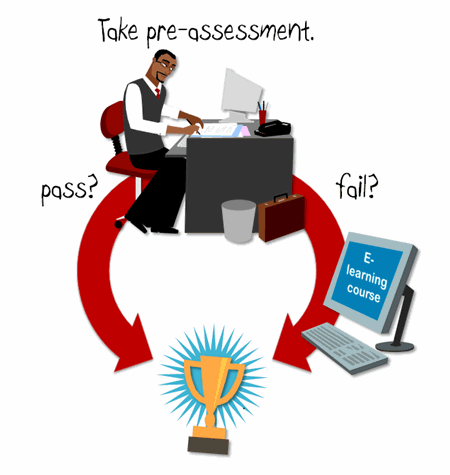
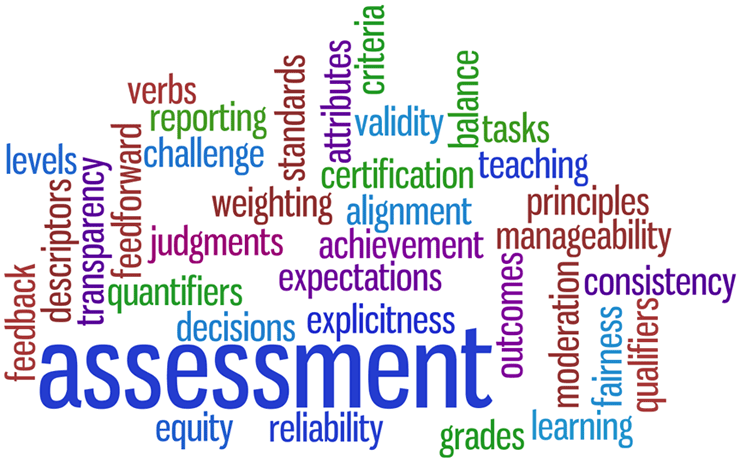


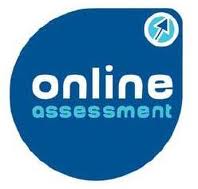
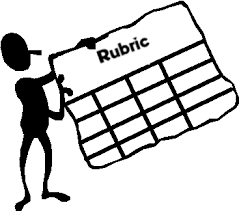
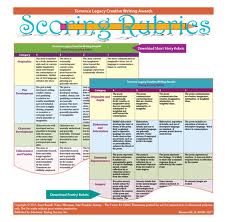



Task 1.
ReplyDeletea. define a formative assessment, and reasons of using it in instruction
Formative assessment guides learning, including giving clear, actionable feedback to students, sharing learning goals, and modeling what success looks like. It is the frequent, interactive checking of students’ progress and understanding in order to identify learning needs and adjust teaching appropriately. If we are not routinely checking for understanding then we are not in touch with our students' learning.
b. state the difference between formative and summative assessment
Summative assessment certifies learning for making some sort of judgment, formative assessment guides learning and it is not a product. Formative assessments are used during instruction rather than at the end of a unit or course of study like summative assessment. Both the teacher and the student use formative assessment results to make decisions about what actions to take to promote further learning.
c. identify 3 strategies of formative assessment you consider most effective for your students, justifying your choice
There are a lot of strategies and very useful for our classrooms. The most effective I consider to be for me are
3 Things – List 3 things that a fellow student might misunderstand about the topic.(5th-6th-9th grade)
3x summarization – write 3 different summaries – one in 15-20 words, one in 30-50 words, one 75-100 words. The different lengths require different attention to details.(9th –12th grade)
Doddle it – have students draw what they understand, instead if writing it.(3rd – 5th grade)
Exit slip – a short quiz or a few simple questions, and students give them as they leave the class:1.Things I have learned today…..2.Things I found interesting….3.Questions I still have.(5th-12th grade)
Create a video – Create short videos or screen-casts explaining their reasoning. In this way I ca see what they are able to explain, what they omit and what they may not understand.(12th grade)
Task 2
ReplyDelete2 online tools that I have already used in the previous Assignments
- These are Animoto and Padlet, very appreciated by my students
2 new digital platforms you have learned about from the references listed below
- Two new web tools that i could access are Flubaroo and Socrative, very attractive for me.
Task 3
ReplyDeleteRubrics are performance-based assessments that evaluate student performance on any given task or set of tasks that ultimately leads to a final product. Rubrics are useful for grading tools and offer to our students transparency
Steps – and criteria to consider when evaluating a rubric.
1.define the objectives and performance levels
2. determine how to describe each level, using "anchor products" that represent various performances that can be evaluated
3. create - Scores (either numerical or qualitative, or a combination of both) that can then be assigned for each level from highest to lowest, or vice versa
4. share the descriptions with the students and ask for feedback so that each level is clearly understood by students
5. Provide examples of students work (kept anonymous) that illustrate each performance level.
6. The scoring system should be objective and consistent. The tasks should be appropriate to students' abilities. Be practical when designing the scoring system. Descriptions within each dimension should also be clear enough for students to focus on what is expected. Fewer dimensions are better than more in most cases when developing rubrics.
Task 4
ReplyDeleteI have tried to do 2 variants
a)http://rubistar.4teachers.org/index.php?screen=ShowRubric&module=Rubistar&rubric_id=2598448&
b) http://rubistar.4teachers.org/index.php?screen=ShowRubric&module=Rubistar&rubric_id=2598445&
Task 1.
ReplyDeletea. all formative assessment practices have the potential to increase student learning, assessment for learning in the classroom. Formative assessment is the frequent, interactive checking of student progress and understanding in order to identify learning needs and adjust teaching appropriately.
Formative assessment can be used to increase a lot of topics most of all I think when we teach grammar, we should use a lot of formative assessment to practice the grammar topic, to do a lot of training in order to see if the students can use it properly.It is not to grade the students it is to teach them to use it correctly.
b. state the difference between formative and summative assessment
Summative assessment certifies learning for making some sort of judgment, it can be applied at the end of a unit, course or a school term.Formative assessment guides learning and it is not a product. Formative assessments are used during instruction rather than at the end of a unit or course of study like summative assessment. Formative assessment results are for both the teacher and the student to make decisions about what actions to take to promote further learning what are the things the students don’t understand or confuse.
c. identify 3 strategies of formative assessment you consider most effective for your students, justifying your choice
Exit Slips – a short quiz about the topic of the lesson: the best or the most important things they remember about the lesson.
The Three-Minute Paper – ashort naration about the unit for eg. What did you like most about the unit ? Where do you need some more explinations about?
One-Sentence Summary
Ask students to write a summary sentence that answers the "who, what where, when, why, how" questions about the topic/unit.
I consider these ones the best because they have litlle time to think and to flip through the lesson or topic,they can remember some things they have already forgotten and to revize the whole unit or class.
Task 4:http://rubistar.4teachers.org/index.php?screen=ShowRubric&module=Rubistar&rubric_id=2599342&
ReplyDeleteTask 1:a)Formative assessment including diagnostic testing is a range of formal and informal assessment procedures conducted by teachers during the learning process in order to modify teaching and learning activities to improve student knowledge. It typically involves qualitative feedback for both student and teacher that focuses on the details of content and performance.
ReplyDeleteb)The goal of formative assessment is to monitor student learning to provide ongoing feedback that can be used by teachers to improve their teaching and by students to improve their learning. More specifically, formative assessments:help students identify their strengths and weaknesses and target areas that need work
The goal of summative assessment is to evaluate student learning at the end of an instructional unit by comparing it against some standard .Examples of summative assessments include:
a midterm exam
a final project
a paper
a senior recital
c)As for me the most interesting and suitable to my students are metacognition—a usual and efficient strategy in each class; watch body language – an immense indicator for teacher about the implication and interest of the students; check for transfer -- helps to see how well students can apply what they studied for the real-world situation; Running records – indicates the ability and development of different skills and the last one is Exit Slips ,I can use it with my 5-form students.
Task 2:The 2 online tools in assesment are:voicethread,thinglink,animoto,padlet.
The two online tools that I can use from the those listed above,I liked all ,but the most interesting to me were Socrative and Polldaddy
Task 3:A rubric is a tool that identifies the various categories relevant to an assignment or learning results, and shows the possible levels of achievement. Rubrics can be used at the time an assignment is given to communicate expectations to students,and help us to grade students more efecientlly.
There are three types of rubrics: analytic, developmental and holistic.
While creating a rubric we have to take into account the following steps: to determine the various skills and abilities that students should demonstrate to show achievement of the learning outcomes, to determine the levels of achievement, to create descriptions for the criteria along each level of achievement.
task 4
ReplyDeletehttps://www.forallrubrics.com/checklist/editRubric/16178287-1dcb-4689-bcb6-d72883a8bbd8/?from=/checklist/listCustom/
Maria, The link you share doesn't direct to your rubric, but the main page of the site, requiring registration. I think you just copied the link of the rubrics you created, which doesn't work if you are not registered or logged on. You need to find the option to share online the document and publish this link in this assignment. If it still does not work, you could use http://rubistar.4teachers.org/index.php to create anew one. Thank you.
DeleteTask 1
ReplyDeletea. define a formative assessment, and reasons of using it in instruction ( maximum 3 phrases)
Formative assessment is done during the process of learning. It helps educators guide the learning process rather than grade or evaluate student performance Since it includes giving clear, actionable feedback to students, sharing learning goals, and modeling what success looks like, it has a great reason to be used in instruction
This kind of assessment has a connection to an instructional unit and consists of many kinds of strategies.
b. state the difference between formative and summative assessment ( maximum 2 phrases);
Formative assessmentguides the process of learning while summative assessment certifies learning. The first is done to help gain knowledge or achieve results while the second - to determine the level of the gained knowledge or the results themselves.
c. identify 3 strategies of formative assessment you consider most effective for your students, justifying your choice ( maximum 3 phrases).
Dos & Don’ts - gives a clear idea of the extent at which students are in understanding the taught material
Yes/No Chart - lets identify the moments that you, as a teacher, need to pay more attention to while explaining
Three Questions - helps to direct students to the three key ideas they need to acquire while studying a definite topic.
Task 2
Select 4 online tools you could use to ensure the formative assessment strategies you presented in Task 1. Please consider that the digital platforms should be described accordingly:
2 online tools you have already used in the previous Assignments , and
2 new digital platforms you have learned about from the references listed below.
Two tools I have already used before: Lino, Google Forms
Two tools from the list: ForAllRubrics.com and Mentimeter.com - really like them, especially the second one.
Task 3
Read the information below and outline in a 50-word paragraph what rubrics are and what they are used for; the types of rubrics; the steps to follow while creating rubrics, and criteria to consider when evaluating a rubric.
Rubrics are performance-based assessments which are used for evaluating student performance on any given task or set of tasks that ultimately leads to a final product, or learning outcome. While ellaborating a rubrics one should use specific criteria for assessing students’ work which should be indicated in narrative descriptions that are usually separated into levels of possible performance related to a given task. Starting with the highest level and progressing to the lowest, these levels of performance are used to assess the defined set of tasks as they relate to a final product or behavior. Each level describes degrees of proficiency and each level is assigned a value that rates the degree of proficiency or student performance. Rating scales are used; they can be numerical, qualitative, or a combination of numerical and qualitative.
Rating scales can be either holistic or analytical. Holistic scales offer several dimensions together while analytical scales offer a separate scale for various dimensions.
Task 1.
ReplyDeletea)Formative assessment guides learning. It is an ongoing, dynamic process that involves far more than frequent testing, and measurement of student learning is just one of its components. It is used for giving clear, actionable feedback to students, for sharing learning goals, and for modeling what success looks like. Formative assessment also consists of many kinds of strategies, can be as informal as asking a well-crafted question, has an explicit connection to an instructional unit and helps teachers guide the learning process rather than grade or evaluate student performance.
b. Summative assessment certifies learning while formative assessment guides learning. Summative assessment is made at the end of an instructional unit to grade the student, while the formative assessment is for instructional reasons. -
c. 1) Quizzes. –I use it in different grades to check either vocabulary, or grammar, or understanding of a text or a video.
2)Answer the LEQ. –I use it in any grade as it gives both me and the students an idea of how much they understood the lesson by answering the essential questions of the lesson (either verbally or written).
3) Extension project. – I use it in different grades and ask students to make a video or a poster in order to let students come up with any creative ideas to demonstrate additional understanding of a concept.
Task 2. 2 online tools you have already used in the previous Assignments
– Google Forms ; and VoiceThread
2 new digital platforms you have learned about from the references listed below.
ForAllRubrics and Rubistar
Task 3. A rubric is an assessment tool that lays out the specific expectations for an assignment. It is used to improve student feedback and to promote student self-learning. There are analytic, (developmental) and holistic rubrics. The steps to use:
1. Determine all the skills and abilities students need to demonstrate in order to achieve the learning outcome, ex. clarity, organization, and grammar.
2. Determine the appropriate levels of accomplishment, ex. needs improvement, developing, sufficient, and above average.
3. Write an overall description of how a student would demonstrate the learning outcome for each level of accomplishment. ex. above average, sufficient, developing, needs improvement.
Questions to ask when evaluating a rubric include:
Does the rubric relate to the outcome(s) being measured? Does it cover important criteria for student performance? Does the top end of the rubric reflect excellence? Are the criteria and scales well-defined? Can the rubric be applied consistently by different scorers?
Task 4.
http://rubistar.4teachers.org/index.php?screen=ShowRubric&rubric_id=2599464&
Task 1.
ReplyDeletea) formative assessment: has an explicit connection to an instructional unit consists of many kinds of strategies, and can be as informal as asking a well-crafted question helps educators guide the learning process rather than grade or evaluate student performance.
b)Interim assessment guides and tracks learning. A wide middle ground exists between teachers’ day-to-day formative assessment of student learning and the formal protocols of state summative assessment. This middle ground offers opportunities—captured under the umbrella term interim assessment—to gather information about many things that are relevant to the teaching and learning process, including: individual and collective student growth effectiveness of teaching practices, programs, and initiatives projection of whether a student, class, or school is on track to achieve established proficiency benchmarks instructional needs of individual students.
c)Summative assessment certifies learning. Generally, educators administer a summative assessment near the end of an instructional unit to help them answer the question, “What did students learn?”
All sorts of different assessment instruments are used for summative assessment, including:
end-of-unit tests and end-of-course tests
performance tasks/simulations
portfolios
oral examinations
research reports
state accountability tests
Task 2.
ReplyDeleteThe on-line tool that I practise with my students are: animoto, picovico, stupeflix, voicethread. Students enjoy stupeflix a lot.
Task 3.
ReplyDeleteA rubric is simply a scoring tool that identifies the various criteria relevant to an assignment or learning outcome, and then explicitly states the possible levels of achievement along a continuum (poor to excellent or novice to expert). Rubrics can be used to assess almost any type of student work, be it essays, final projects, oral presentations, or theatrical performances. They can be used at the time an assignment is given to communicate expectations to students, when student work is evaluated for fair and efficient grading, and to even assess a program by determining the extent to which students are achieving departmental learning outcomes.
Task 4.
ReplyDeleteHere is the link of the rubric for one of evaluated presentation:
http://rubistar.4teachers.org/index.php?ts=1454236449
Luminita Tiuliuliuc Assignment 16 Task 1
ReplyDeletea) Formative assessment guides learning. It includes giving clear, actionable feedback to students, sharing learning goals, and modeling what success looks like. It consists of lots of strategies.
b) Summative assessment is usually administred at the end of an unit or course. It has the aim to certify learning. Another difference is that formative ass. is done to help gain knowledge or achieve results while summative as. is to determine the level of the acquired knowledge.
Luminita Tiuliuliuc Assignment 16 Task 1
ReplyDeletec) The strategies I use as a formative assessment are: Grammar tests in order to see how successfully the students can apply English Tenses in integrated message productions; Venn Diagrams - when they need to identify the common/different features of a given content (I hope to give my students the task of comparing the videos of their peers and select the best one according to a special requirement rubric, I hope they will enjoy it). And the third one is I think the well-known quiz which would comprise vocabulary / grammar/spelling, etc.
Task 1
ReplyDeletea) Formative assessments help us differentiate instruction and improve student's achievement. It consists of a lot of tasks.
b) Summative assessments are conducted after a unit or certain time period to determine how much learning has taken place, but formative assessments, support learning during the learning process.
c) I use the strategies such as One-Sentence Summary,that consists in asking students to write a summary sentence that answers the "who, what where, when, why, how" questions about the topic; three questions - helps to direct students to the three key ideas they need to acquire while studying a definite topic; the quiz that helps students to accomplish the assessments.
Task 2
ReplyDeletea)The online tools that i've practised with my students are voicethread, and animoto.
b)ForAll Rubrics and Rubistar.
Task 3
ReplyDeleteRubrics are useful for teachers and learners for five reasons:
1. They are useful as tools of teaching and assessment.
2. They help students become more thoughtful judges of the quality of their work and those of their peers.
3. They save teachers’ time spent on evaluating student work.
4. They are easy to use.
The goal of formative assessment is to monitor student learning, to provide ongoing feedback that can be used by instructors to improve their teaching and by students to improve their learning. More specifically, formative assessments is a process in which students collect information about their own learning, analyze what it reveals about their progress toward the intended learning goals and plan the next steps in their learning.
ReplyDeleteThe goal of summative assessment is to evaluate student learning at the end of an instructional unit by comparing it against some standard or benchmark.
Roibu Svetlana Assignment#16 Task 1:
ReplyDeletea. Formative assessment aids learning by generating feedback information on performance, in class or on assignments, enables students to restructure their understanding/skills and build more powerful ideas and capabilities;
b. It is commonly contrasted with summative assessment, which seeks to monitor educational outcomes, often for purposes of external accountability.
c. Testing, End-of-lesson Feedback, Think-Pair-Share, Thesis Statement Activity, analyzing of the students Homework, Questioning, One/Five minute writing, etc. These strategies of Formative assessment motivate students to work day-by-day and and to be engaged in all classroom activities.
Roibu Svetlana Assignment#16 Task 2:
ReplyDeleteI can select next 4 online tools:
- I have already used 3 tools-Google Forms, Thinglink and Rubistar;
- There are 2 new digital platforms you have learned about from the references SMART, ForAllRubrics;
Roibu Svetlana Assignment#16 Task 3:
ReplyDelete- A rubric is simply a scoring tool that identifies the various criteria relevant to an assignment or learning outcome, and then explicitly states the possible levels of achievement along a continuum (poor to excellent or novice to expert).
There are different types of rubrics such as Analytic Rubrics, Developmental Rubrics, Holistic Rubrics.
- The steps that must follow in creating rubrics are:
The following steps illustrate how an analytical rubric is created.
Determine the various skills and abilities that students should demonstrate to show achievement of the learning outcome(s). These skills and abilities are the various criteria. Each criterion should focus on a different skill identified by a phrase or brief statement, and each criterion should be measurable through the examination of student work. The criteria become the leftmost column of the grid.
The next step is to determine the levels of achievement possible given the expectations of what students are to be able to demonstrate. The levels can be numerical categories, but more frequently are descriptions, sometimes with an associated number. It is at this stage that the number of columns is determined and the levels of achievement are listed across the top row.
The next step in the creation of an analytic rubric is to create descriptions for the criteria along each level of achievement. While sometimes this step is skipped, this is not recommended as the descriptions are valuable for helping to increase reliability among multiple raters and even for a single rater as she assesses the work of different students.
- Criteria to consider when evaluating rubrics are:
1. Does it cover important criteria for student performance?
2. Does the rubric relate to the outcome(s) being measured?
3. Does the top end of the rubric reflect excellence?
4. Are the criteria and scales well-defined?
5. Can the rubric be applied consistently by different scorers?
Roibu Svetlana Assignment#16 Task 4:
ReplyDeleteThe Sample is published on: http://englishteachersblogforpupils.weebly.com/teachers-portfolio.html You can look for Sample: the argumentative essay rubrics of assessment (made with Rubistar) (* Could be used and for assessment of different writing products.)
Roibu Svetlana Assignment#16 Task 4 additional answer:
ReplyDeleteRubrics for Writing a Letter http://rubistar.4teachers.org/index.php?ts=1455380077
Task 1
ReplyDeletea) A formative assessment is permanent /frequent interactive checking of student work/progress and understanding (by teacher, as well as by student) in order to identify learning needs and adjust teaching to this needs. So, it is used by teachers to adjust their ongoing instructional procedures and can be used by the students themselves to adjust their current learning tactics.
b) Formative assessment is permanent, it happens at each lesson, but summative assessment is the evaluation at the end of a unit/semester/final exam/portfolio. Traditionally it could be a standard test.
c) Homework is the most common formative assessment. The one that I use in the classroom: “After 40 minutes I can say…”, “3-2-1” (3 interesting moments; 2 discovered things; 1 unclear aspect); “The apples” (I have cards with apples coloured in red—ripen and sweet(everything is understood and the lesson is learned), in yellow—not very sweet (there is an unclear moment about the lesson), in green—unripen, sour (almost everything is unclear, it should be retaught).
Task 2
• The one I have used: Animoto, glogster, voicethread
• The new one: Socrative, polldaddy
Task 3
The rubrics are a scoring tool that identifies the various criteria relevant to an assignment, offering the possibility to determine the level of the achievement along a continuum. According to their main objective, there are analytic, developmental and holistic rubrics. Teachers should avoid holistic rubrics because they are too general and give little feedback.
Task 4
http://galinamadam.weebly.com/homework/viith-grade-english-classroom
Task 1
ReplyDeletea) Formative assessment delivers information during the instructional process. It is an ongoing, dynamic process that involves far more than frequent testing, and measurement of student learning is just one of its components. Both the teacher and the student use formative assessment results to make decisions about what actions to take to promote further learning.
b) The formative assessment is applied by teachers during the process, as for summative assessment- teachers apply it near the end of the unit, semester or year. The formative assessment monitor student learning, the summative assessment evaluate student learning.
c) There are a lot of strategies of formative assessment I use during my lessons. Some of them are: matching, Venn diagramme, T-chart, 3-2-1 technique.
Task 2
Web 2 tools can make formative assessment diverse and exciting. I think I could use such online tools for assessment as Google forms, Quizzes as well as Padlet. Utellstory and Voicethread are wonderful tools for giving feedback, Movenotes, Voki and Vocarroo can be used for voiced self-assessment.
Task 3
Rubrics are online tools that evaluate student performance on any given task or set of tasks that ultimately leads to a final product, or learning outcome. Rubrics can be used to assess almost any type of student work, be it essays, projects, oral presentations, or theatrical performances. They can be used at the time an assignment is given to communicate expectations to students, when student work is evaluated for fair and efficient grading.
These are some types of rubrics:
Analytic Rubrics - resembles a grid with the criteria for a student product listed in the leftmost column and with levels of performance listed across the top row often using numbers and/or descriptive tags;
Developmental Rubrics - are a subset of analytic trait rubrics and designed to answer the question, “to what extent are students who engage in our programs/services developing this skill/ability/value/etc.?”
Holistic Rubrics - consist of a single scale with all criteria to be included in the evaluation being considered together.
Creating a rubric a teacher should follow the following steps: identifying the specific course or program outcome that he/she is going to assess, setting the knowledge level of the outcome, formulating the criteria for project and the grading scale.
The rubrics help students to recognize the strengths and weaknesses of their work and direct their efforts to improve themselves, they also students to appreciate the students’ works more objectively.
Task 4
Here are the rubrics I have created:
http://marianaursu-popescu.weebly.com/proiecte-individuale
http://magicenglishmagicehglish.weebly.com/one-day-in-my-life
Luminita Tiuliuliuc
ReplyDeleteAssignment 16 Task 2
The on-line tools my students enjoyed were: Animoto, StupefFix, Voki and Vocarroo.
Tiuliuliuc Luminita Assignment 16 Task 3
ReplyDeleteA rubric is a tool that identifies the various categories relevant to an assignment or learning results. Rubrics can be used at the time an assignment is given to communicate expectations to students,and help us to grade students more efecientlly.
There are three types of rubrics: analytic, developmental and holistic.
While creating a rubric we have to take into account the following steps: to determine the various skills and abilities that students should demonstrate to show achievement of the learning outcomes, to determine the levels of achievement, to create descriptions for the criteria along each level of achievement.
The rubrics help students to recognize the strengths and weaknesses of their work and direct their efforts to improve themselves.
Assessement16
ReplyDeleteTask 1
a)Formative assessment is based on a set of procedures conducted by teachers during the learning process in order to modify teaching and learning activities to improve student performance. Formative assessment guides learning. It includes giving clear, actionable feedback to students, sharing learning goals, and modeling what success looks like. It typically involves qualitative feedback (rather than scores) for both student and teacher that focuses on the details of content and performance.
Evidence about student achievement should be elicited, interpreted, and used by teachers and learners to make decisions about the next steps in the learning process so that they become better.
b) The goal of formative assessment is to monitor student learning ,it
helps students identify their strengths and weaknesses and target areas that need work.
The goal of summative assessment is to evaluate student learning , to measure the level of success or proficiency that has been obtained at the end of an instructional unit by comparing it against some standard .
c) Formative assessment strategies are used to check for understanding of student learning and to make decisions about current and future instruction. In my opinion the three more effective strategies for my students would be:
1)Surveys/Quizzes - a quick way to determine what your students have learned about a topic of study
2) Extension project – It can be used at different levels . Students are free to come up with different creative ideas for making a digital poster or a video in order to demonstrate additional understanding of a concept.
3.Portfolio check- A portfolio usually includes personal reflections where the student explains why each piece was chosen and what it shows about his/her growing skills and abilities
Task 2
ReplyDelete3 online tools that I have already used in the previous Assignments and even during lessons are :
- Animoto ,Glogster and Thinglink , experienced and enjoyed by my students
2 new digital platforms you have learned about from the references listed below
- Two new web tools that I could access are Flubaroo and Socrative. I got interested in them.
Task 3.
ReplyDelete- A rubric is an assessment tool that lays out the specific expectations for an assignment. -A rubric is an assessment tool to save grading time ,improve students’ feedback and it is used to improve student feedback and to promote student self-learning.
-There are different types of rubrics such as Analytic Rubrics, Developmental Rubrics, Holistic Rubrics. T-There are analytic, (developmental) and holistic rubrics.
The steps to use Rubrics are:
-Determine the skills and abilities (what should students demonstrate to show achievement of the learning outcome(s).
-The next step is to determine the levels of achievement ( what students are to be able to demonstrate).
-The next step in the creation of an analytic rubric is to create descriptions for the criteria along each level of achievement.
- Criteria to consider when evaluating rubrics are:
- Does it cover important criteria for student performance?
- Does the rubric relate to the outcome(s) being measured?
- Does the top end of the rubric reflect excellence?
-Are the criteria and scales well-defined?
- Can the rubric be applied consistently by different scorers?
Task 4. I have made test with multiple choice,they are:duseablog.weebly.com.assignment for the 5th.6th, 7th,8th, 9th grade, they are on different topics
ReplyDeleteTask 1 a)Formative assessment includes diagnostic testing as a range of formal and informal assessment procedures conducted by teachers during the learning process in order to modify teaching and learning activities to improve student's knowledge. It typically involves qualitative feedback for both student and teacher that focuses on the details of content and performance.
ReplyDeleteb)The goal of formative assessment is to monitor student learning to provide on-going feedback that can be used by teachers to improve their teaching and by students to improve their learning. More specifically, formative assessments:help students identify their strengths and weaknesses and target areas that need work
The goal of summative assessment is to evaluate student learning at the end of an instructional unit by comparing it against some standard .Examples of summative assessments include:*a midterm exam;a final project; a test- paper or a senior recital.
Task 2.The on-line tools I have already used from the list are: Google forms and Animoto,and two new I consider interactive are Socrative and For all rubrics
ReplyDeleteTask 3
ReplyDeleteRubrics are online tools that evaluate students' performance on any given topic or set of tasks that ultimately leads to a final product, or learning outcome. Rubrics can be used to assess almost any type of student work, essays or projects, oral presentations or theatre performances. They can be used to communicate expectations to students, when student's work is assessed for fair and efficient grading.
These are some types of rubrics:
The Analytic Rubrics - resembles a grid with the criteria for a student product listed in the leftmost column and with levels of performance listed across the top row often using numbers and/or descriptive tags;
The developmental Rubrics - are a subset of analytic trait rubrics and designed to answer the question, “to what extent are students who engage in our programs/services developing this skill/ability/value/etc.?”
The Holistic Rubrics - consist of a single scale with all criteria to be included in the evaluation being considered together.
In order to create a rubric the teacher should follow the following steps:
*to identify the specific course or program outcome that he/she is going to assess, *to set the knowledge level of the outcome,
* to formulate the criteria for project and the grading scale.
The rubrics help students to recognize the strengths and weaknesses of their work and direct their efforts to improve themselves, they also help students to appreciate the students’ works more objectively.